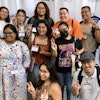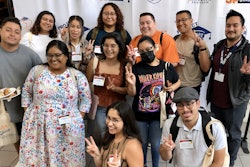BEIJING
Hispanics have rapidly emerged as the largest minority group in the United States, comprising 15 percent of the population, but on the U.S. Olympic team assembling in China they are for a range of reasons strikingly underrepresented.
It’s no fault of the Lopez family from Sugar Land, Texas three Lopez siblings are on the taekwondo team, coached by their oldest brother. It’s no fault of Commerce, California, a heavily Hispanic working-class suburb of Los Angeles with a youth aquatics program that has produced two members of the women’s water polo team.
Overall, however, an Associated Press review found only about two-dozen Hispanic athletes on the nearly 600-member U.S. team roughly 4 percent. By contrast, African-Americans, who make up 13.5 percent of the population, hold more than 120 spots on the team. More than half of the 126 U.S. track-and-field athletes are Black; only two distance runners Leonel Manzano and Jorge Torres are fully Hispanic.
Torres, raised in the Chicago area by Mexican-born parents, says it may take another generation before Hispanic Americans assume an Olympic role proportionate to their numbers.
“We’re still a young culture many of us are first-generation Americans,” he said. “The priorities for my parents weren’t sports; they were to put bread on the table, to move ahead and become good American citizens.”
Torres says he had enough raw talent to attract college scholarship offers. But he contended that many young Hispanic athletes in track and other sports fall through the cracks despite great promise.















